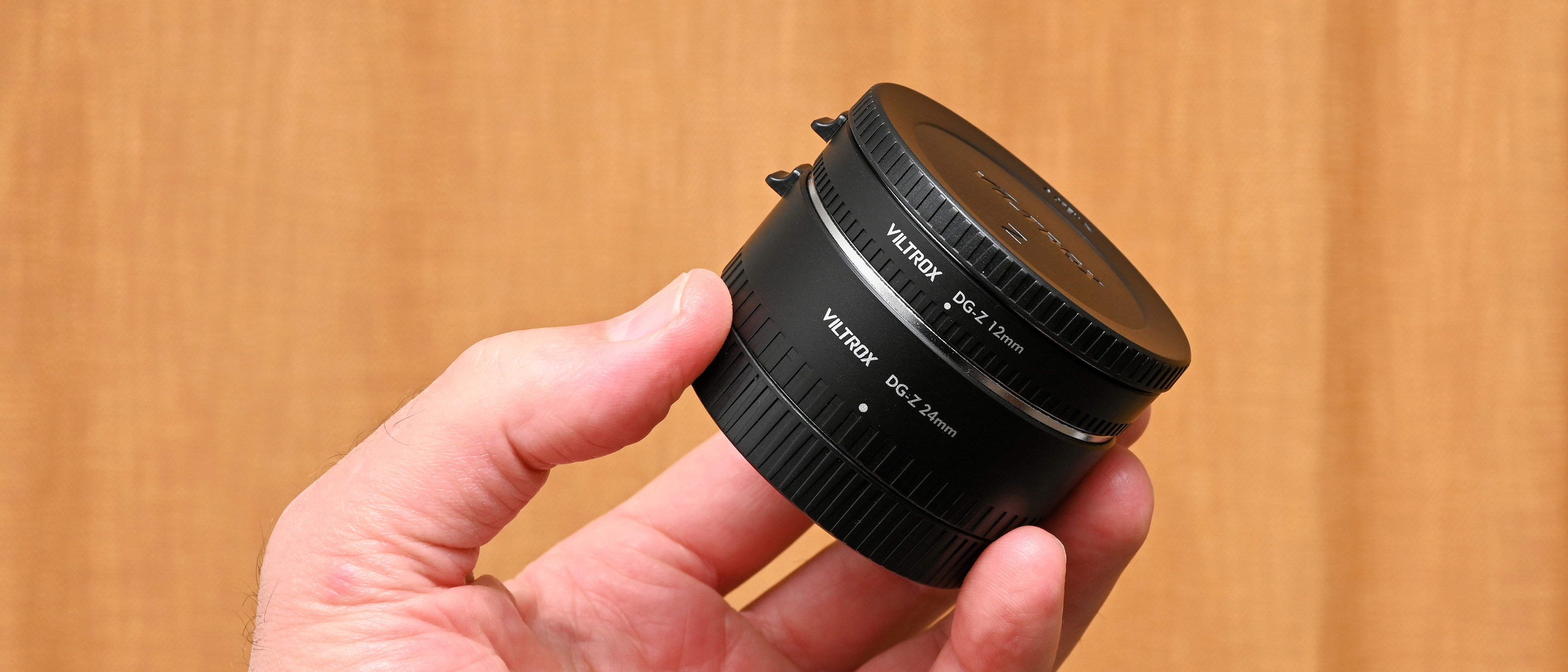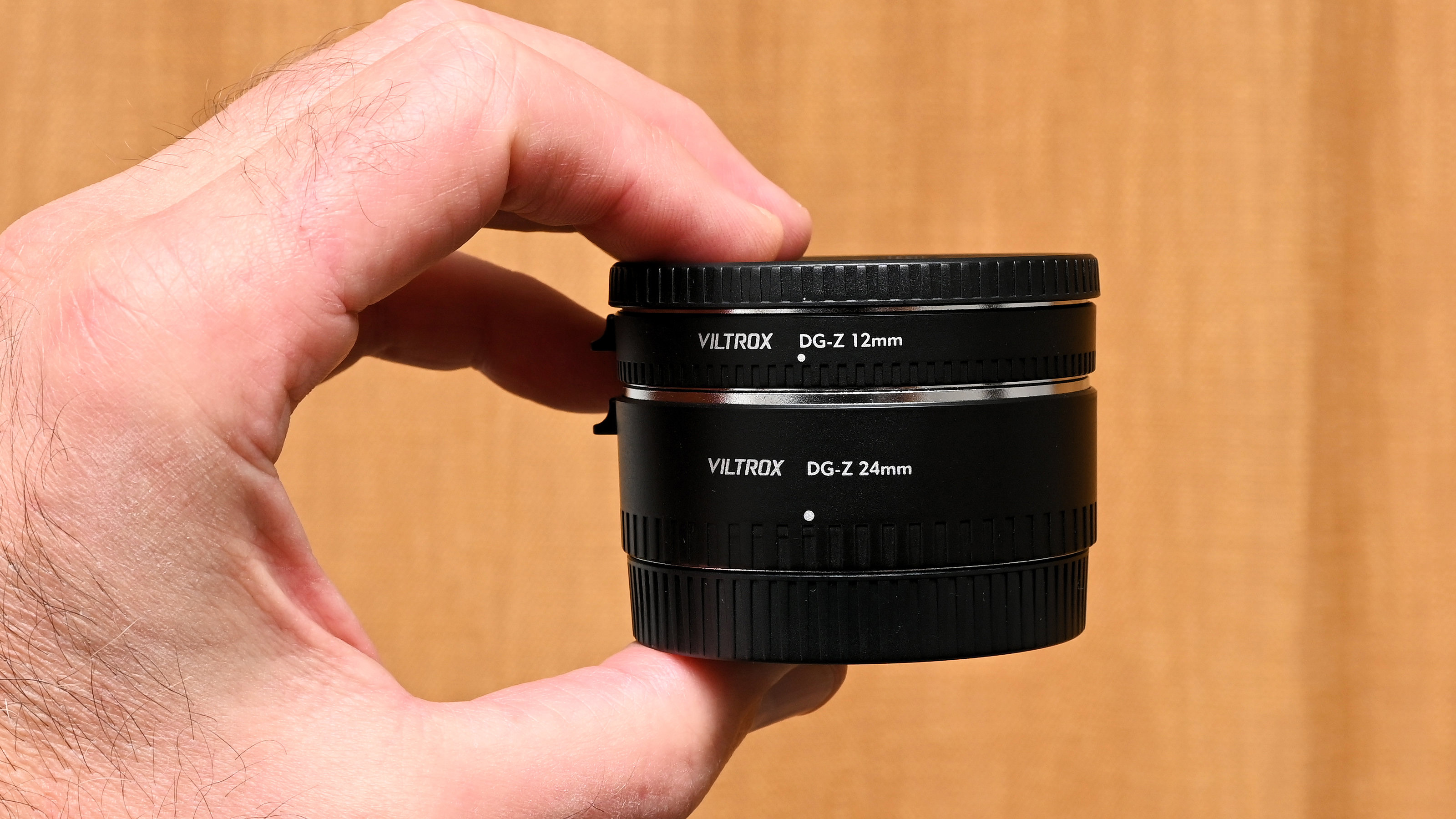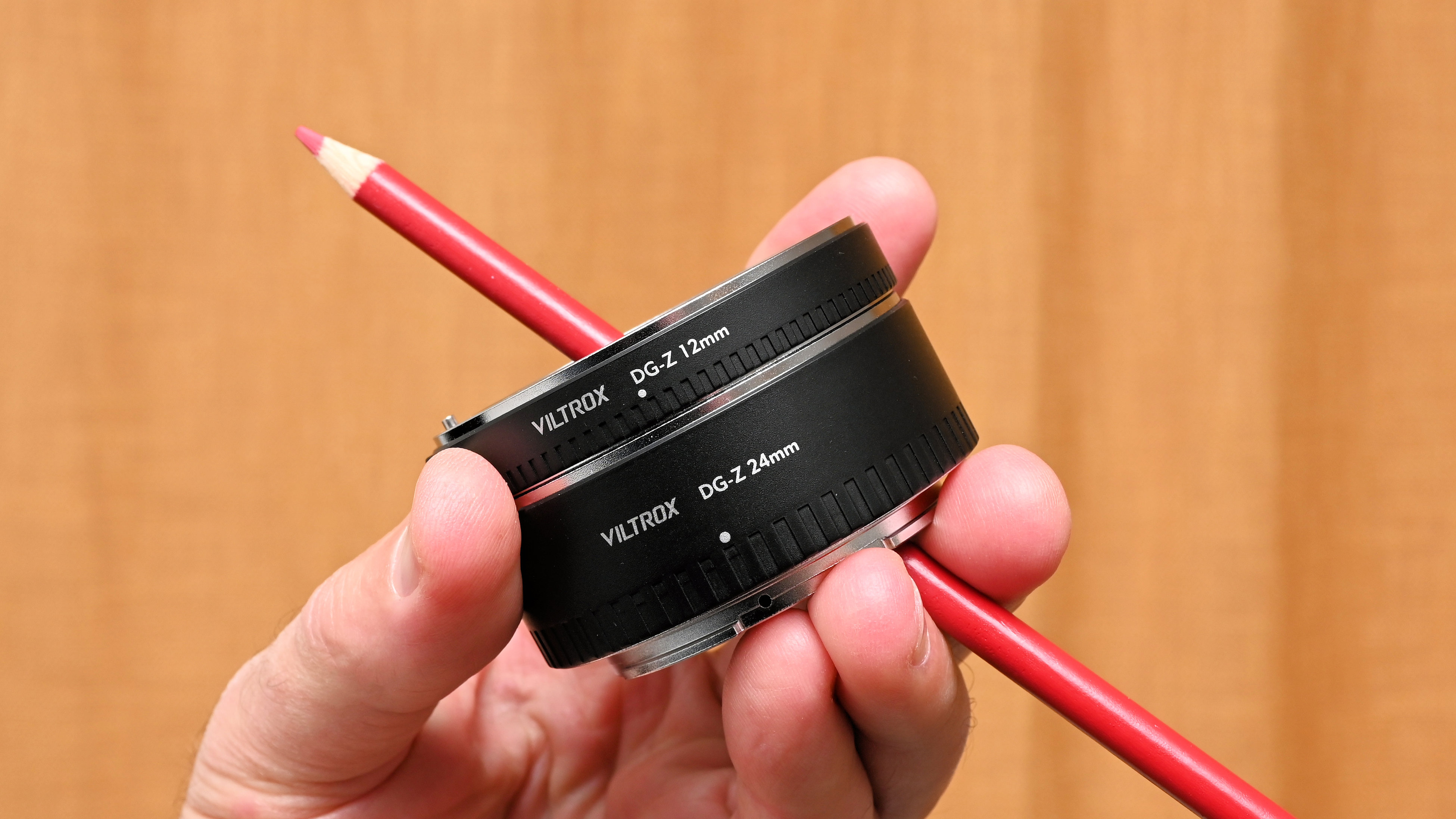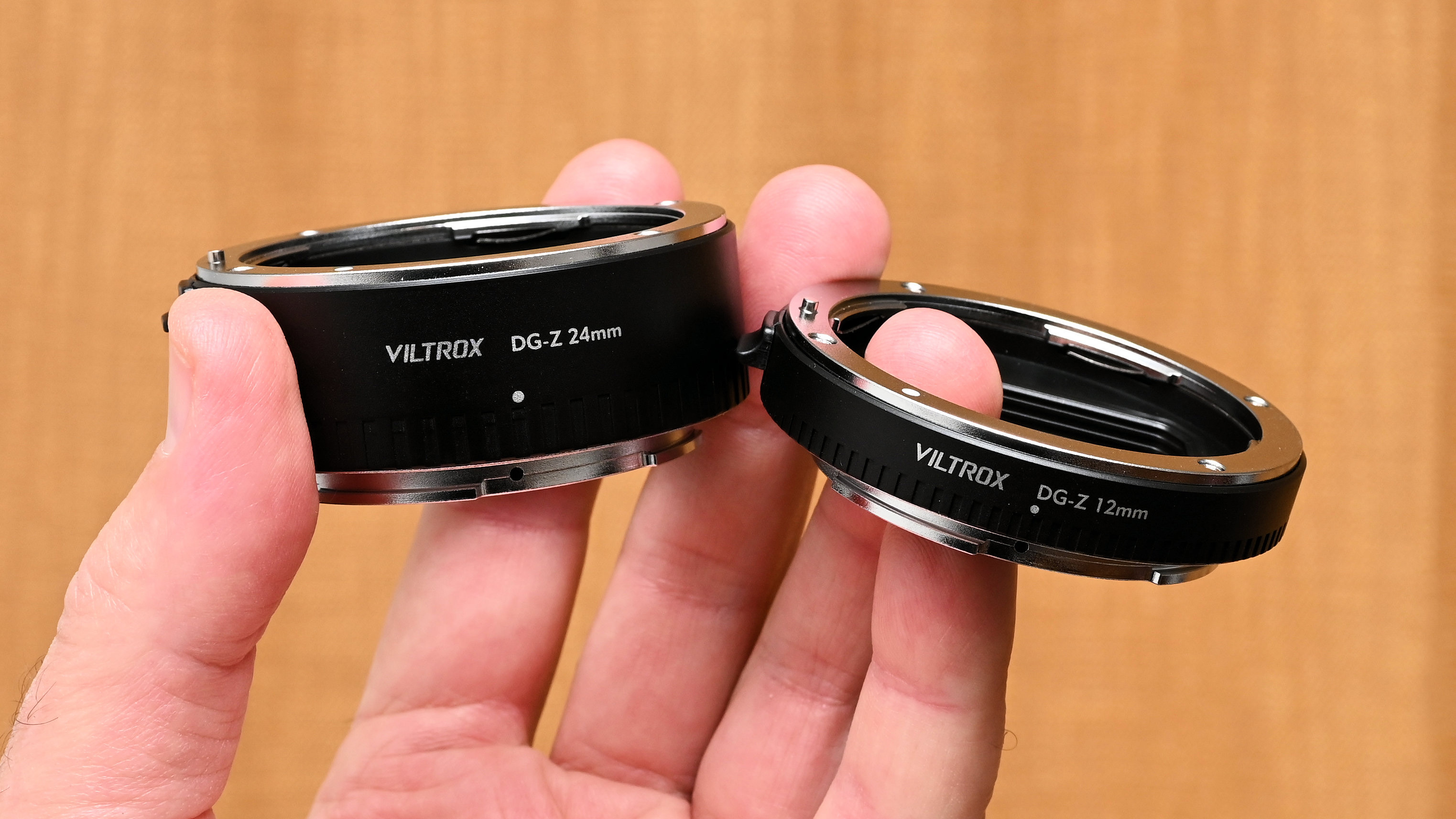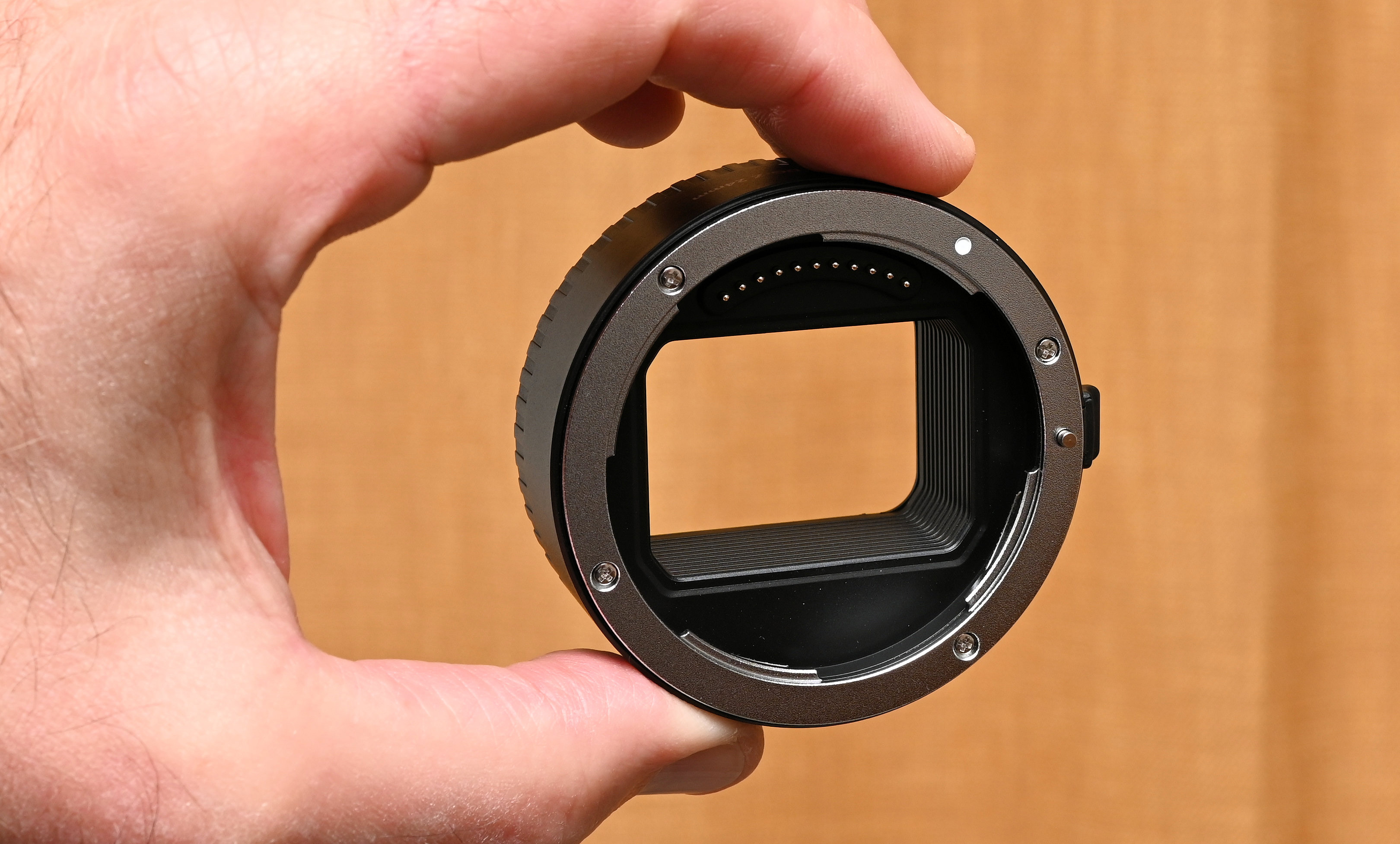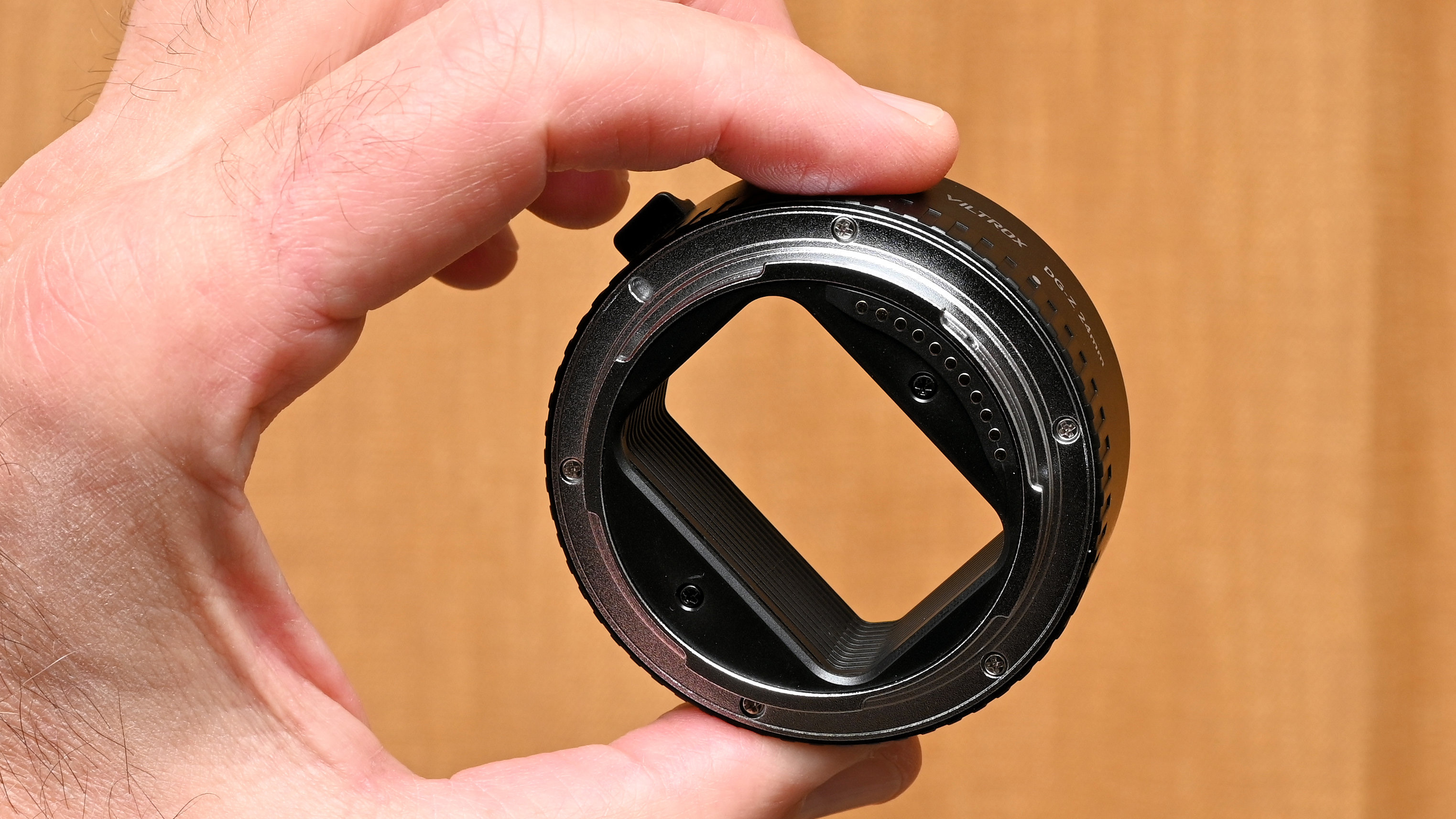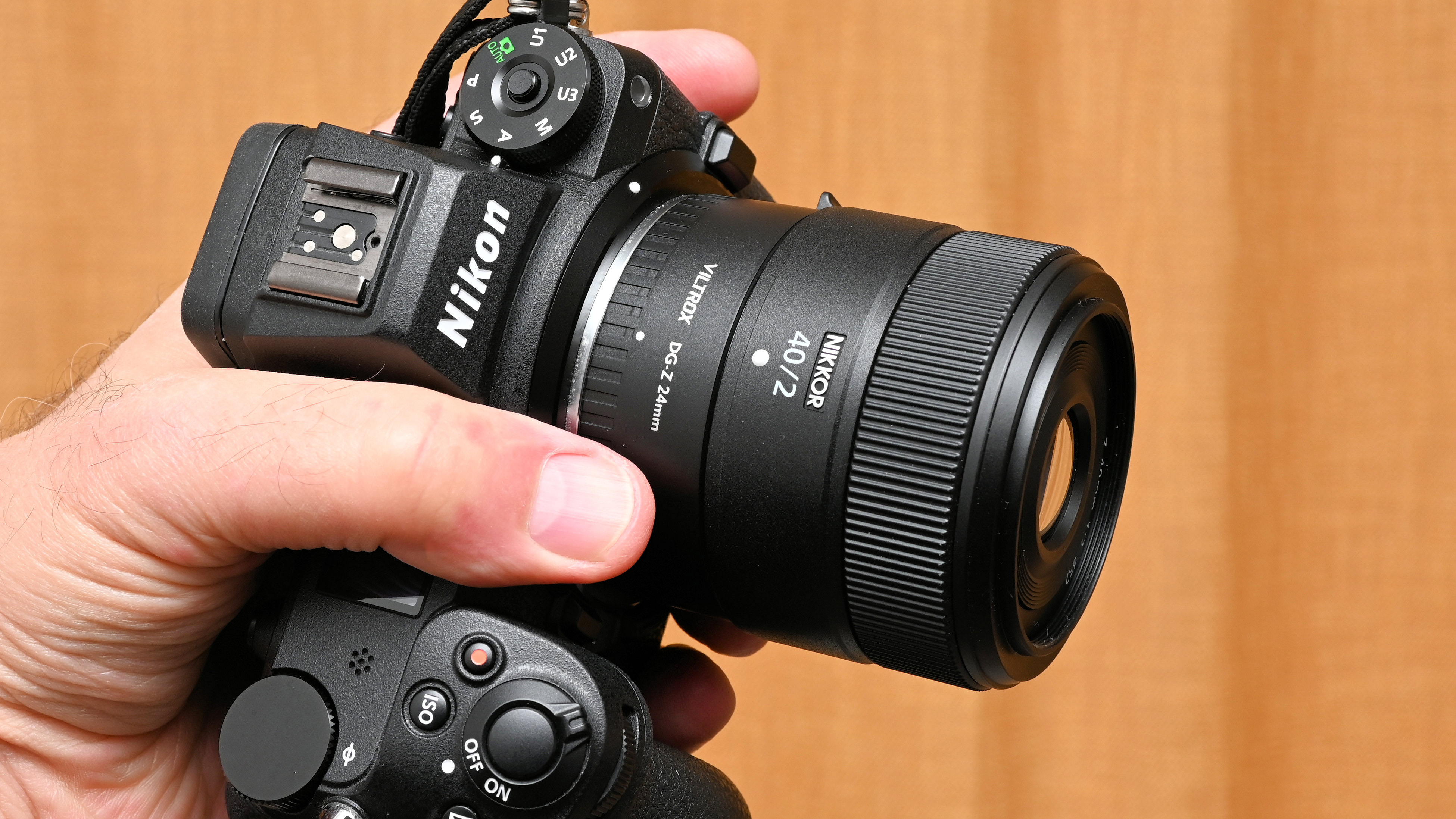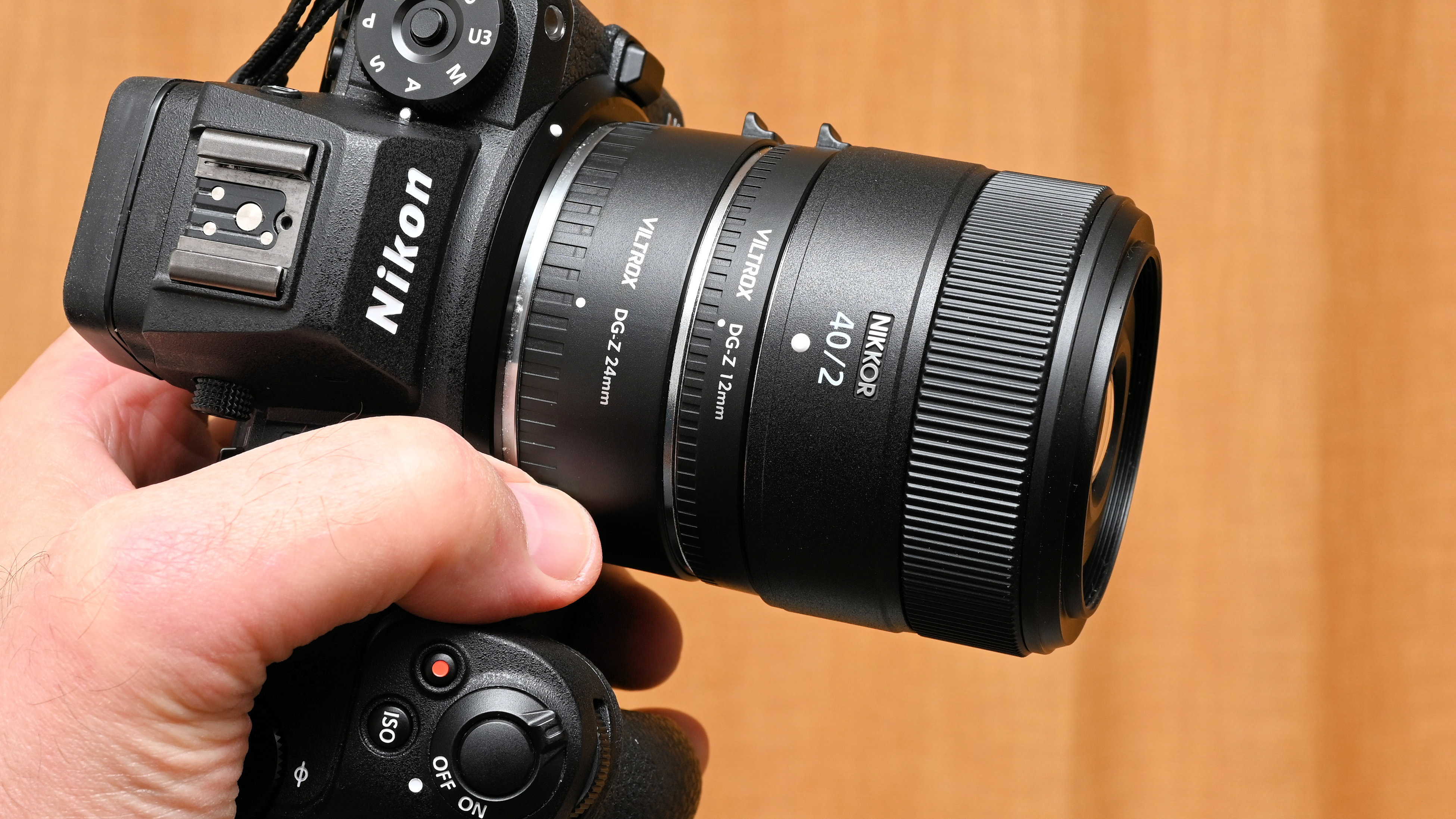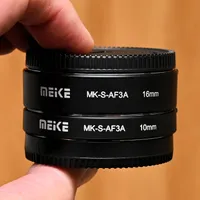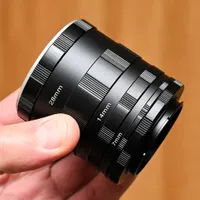Digital Camera World Verdict
The Viltrox DG AF Macro Extension Tube Ring are incredibly lightweight but I feel they’re pretty solid and sturdy. I like that the pass-through electronics enable accurate through-the-lens metering and ensure compatibility with the widest possible selection of lenses. I’m also pleased that the two tubes deliver three different and useful magnification factors when used on their own or together as a pair. They’re very good value for money at the price, but I think it’s a shame they’re not available in more mount options.
Pros
- +
Designed for mirrorless cameras
- +
Electronics pass-through
- +
Lightweight but sturdy
- +
Excellent value
Cons
- -
2 tubes, not 3
- -
Not the greatest magnification
- -
Only 2 mount options
- -
No match for a macro lens
Why you can trust Digital Camera World
Viltrox is a Chinese company that’s really impressed me over the last couple of years. They make some of my favorite lenses, ranging from extremely compact and lightweight ‘Air’ series primes to imposing, full-featured ‘Pro’ and ‘Lab’ series lenses. A common link throughout is that Viltrox lenses deliver very good performance for their class, at extremely competitive prices.
The set of two extension tubes that I’m reviewing here isn’t a lens as such, as it has no glass elements. Instead, it transforms regular lenses, giving them much greater close-up abilities. Available in Leica L and Nikon Z mount options, the Viltrox aims to be one of the best extension tube sets on the market for Leica, Panasonic, Sigma and Nikon mirrorless cameras. However, I think it’s a bit of a shame that the tubes aren’t available in additional mount options for the likes of Canon, Fujifilm, Sony and other makes of camera.
Viltrox DG AF Macro Extension Tube Ring: Specifications
Lens mount | Nikon Z |
Tube lengths | 12/24mm |
Electronic contacts | Yes |
Mount material | Metal |
Viltrox DG AF Macro Extension Tube Ring: Price
When I think of extension tube sets, one of the first that springs to mind is the Kenko Auto Extension Tube Set DG. It’s been around for quite a few years and is showing its age a bit, as it’s designed for Canon EF and Nikon F mount DSLRs rather than mirrorless cameras. It costs around $119 / £119 / AU$290 to buy, which makes the Viltrox kit look very reasonably priced at $52 / £40 / AU$75, even if it does only contain two tubes compared with the Kenko’s three. It certainly has the potential to be yet another Viltrox bargain buy.
Viltrox DG AF Macro Extension Tube Ring: Design & Handling
I should be used to the fact that Viltrox makes some unfeasibly lightweight kit, having reviewed some of its Air series lenses like the AF 14mm f/4 Air and AF 35mm f/1.7 Air, which only weigh 170g / 6oz each. Even so, I was surprised when picking up this set of two extension tubes that it’s a real featherweight, so much so that my curiosity drove me go and grab my digital scales.
Both tubes together, with their ABS bodies and metal mounting plates but without the protective caps, weigh in at just 76g / 2.7oz, made up of 33g / 1.2oz for the shorter 12mm tube and 43g / 1.5oz for the longer 24mm tube. Sure, there are no glass elements involved but even so, they’re crazy lightweight for a pair of extension tubes that feature electronic connections and a sturdy feel to their construction.
The lightness of weight is even more remarkable considering that both of the tubes have their own, independent metal camera mount at the back end and lens mount at the front end. I’ve seen and used sets of extension tubes in the past where the multiple tubes simply screw together, and you only get one pair of camera/lens mounting plates, which also screw on to whichever tube or combination of tubes that you’re using. That makes swapping between different tubes a comparatively time-consuming chore. With these Viltrox tubes, they’re good to go and you can simply attach either of them to your lens and camera, or use them as a pair with no hassle at any point.
Another bit of finesse is that the tubes have full electronic connectivity that passes through from the camera to the lens, whether you’re using either of them individually, or both as a pair. You might be thinking that manual operation is more ideal for extreme close-ups but even so, the inclusion of electronic connectivity might be more essential than you’re imagining. For example, both of the Viltrox Air lenses that I mentioned earlier and many other lenses from all sorts of manufacturers and for all kinds of cameras, rely on the aperture to be set from the host camera body, via an electronic connection.
The best camera deals, reviews, product advice, and unmissable photography news, direct to your inbox!
As such, they don’t feature a mechanical aperture control ring. The same goes for focusing because, even though the lenses will typically feature a manual focus ring, nowadays it’s usually electronically coupled to a stepping motor to move the focusing groups, and therefore won’t work without electrical power passed through from the camera body. In short, no electronic connection equates to no control over aperture nor focusing.
To keep the lens securely attached to either tube, and to attach the two tubes together when used as a pair, they both feature a lock/release pin with a spring-loaded operating lever. As usual, the inside of the tubes is just empty space but rather than having a blank circular profile, the Viltrox tubes have a letterbox shaped aperture with a matte black ridged profile. This helps to cut down any stray internal reflections that could degrade image quality.
Let’s take a moment to focus on the whole point of extension tubes. Their sole purpose is to put some additional distance between the lens and camera body. This has the effect of shortening the minimum focus distance of the lens, thus delivering a larger maximum magnification factor. You can use extension tubes with both prime and zoom lenses but a prime lens with a focal length of around 50mm to 100mm is generally considered to be ideal. Use a wide-angle lenses with extension tubes and extreme vignetting can be the result, whereas long telephoto lenses give relatively disappointing levels of magnification.
I think that the individual lengths of 12mm and 24mm for the two tubes in this Viltrox set is a good choice. They’re long enough to make a massive difference, but not so long that they’re overly difficult to use. Join them together and the resulting 36mm overall length can give you some serious magnification power. Indeed, it can feel like looking at your subject matter through a powerful magnifying glass.
Viltrox DG AF Macro Extension Tube Ring: Performance
Some people swear by using extension tubes with zoom lenses but you can run into problems. If the physical length of the lens is quite long, you’re likely to end up with the front of it coming so close to the subject that they’re almost touching. In extreme cases, there simply won’t be enough working space to enable you to bring the subject into focus. That’s because while extension tubes reduce the minimum focus distance of a lens, they also reduce the maximum focus distance. Instead of being able to focus to infinity (like you can with the vast majority of specialist macro lenses) you might only be able to focus to a longest distance of a few inches, as measured from the image sensor in your camera body. Those inches from the image sensor to the subject need to be able to accommodate the length of the lens in between.
The working distance can also become impossibly short when using wide-angle lenses. As a guide, Viltrox recommends that the focal length of the lens should be greater than the physical length of the extension tube (or combined tubes) that you’re using. Bearing in mind that shorter focal lengths give greater magnifications, I decided to sail fairly close to the wind and tested the tubes with their combined length of 36mm, using my Nikon Z6 II camera body and Nikon Z 40mm f/2 lens.
I like this choice of Nikon Z 40mm lens for use with the extension tubes because it’s compact and lightweight, so you get a good overall size and balance, and the lens also focuses pretty close even without the addition of extension tubes, down to a distance of 29cm that gives a native maximum magnification factor of 0.17x. That’s substantially more than the 0.1x that you tend to get with most 50mm standard prime lenses. As I’d expect, with the extension tubes added into the equation, I got a massive increase in maximum magnification factors.
Click your way through the gallery of images below and you’ll see a series of shots that I took of a set of colored pencils on a sheet of white paper. For the first shot in the sequence, I used my 40mm lens at its minimum focus distance for its maximum native magnification, without using an extension tube. Successive shots are based on the addition of the 12mm, then the 24mm tube on their own, and finally using both tubes to give a 36mm extension. The gallery gives a pictorial example of how much greater the magnification becomes in each case.




It's often said that extension tubes don’t cause any degradation in image quality. That’s true to some extent, as there are no additional glass elements in the resulting optical path, and therefore minimal risk of impairment to image quality. However, you’re likely to be using extension tubes with general-purpose lenses, which aren’t typically designed to deliver optimum performance at their closest focusing distances.
Ultimately, in terms of performance, you can expect very good results but they’re unlikely to match the quality of using one of the best macro lenses. For one thing, macro lenses are generally designed to be ‘flat field’ optics with no field curvature. Shoot a flat subject like a stamp or coin from head on, and it should therefore be sharp from one edge to the other. I’ve usually found that with general-purpose lenses and extension tubes, the edges and corners of the image frame are comparatively blurry. However, that’s due to the design of the lens itself, rather than the quality of the actual extension tubes.
Viltrox DG AF Macro Extension Tube Ring: Sample images
The following gallery of example images was shot with my Nikon Z 40mm prime lens on my Nikon Z6 II camera body. For this series, I used just the longer 24mm extension tube on its own, which still gave a massive enlargement when used with the lens at its shortest focus distance. Accurate focusing can be a real challenge, due to the miniscule depth of field, so I used a tripod and a NiSi NM-200s Macro Focusing Rail, which made life a whole lot easier. The subject matter includes sections of a variety of very small objects, including seeds gathered from my garden, a 1/32nd scale model racing car, a broken shell that I picked up on a beach, a porcelain figurine, a pair of toy soldiers and the slightly scary looking head of a traditional Christmas ‘Nutcracker’ toy. All of the subjects were lit with a pair of LED photographic lights.


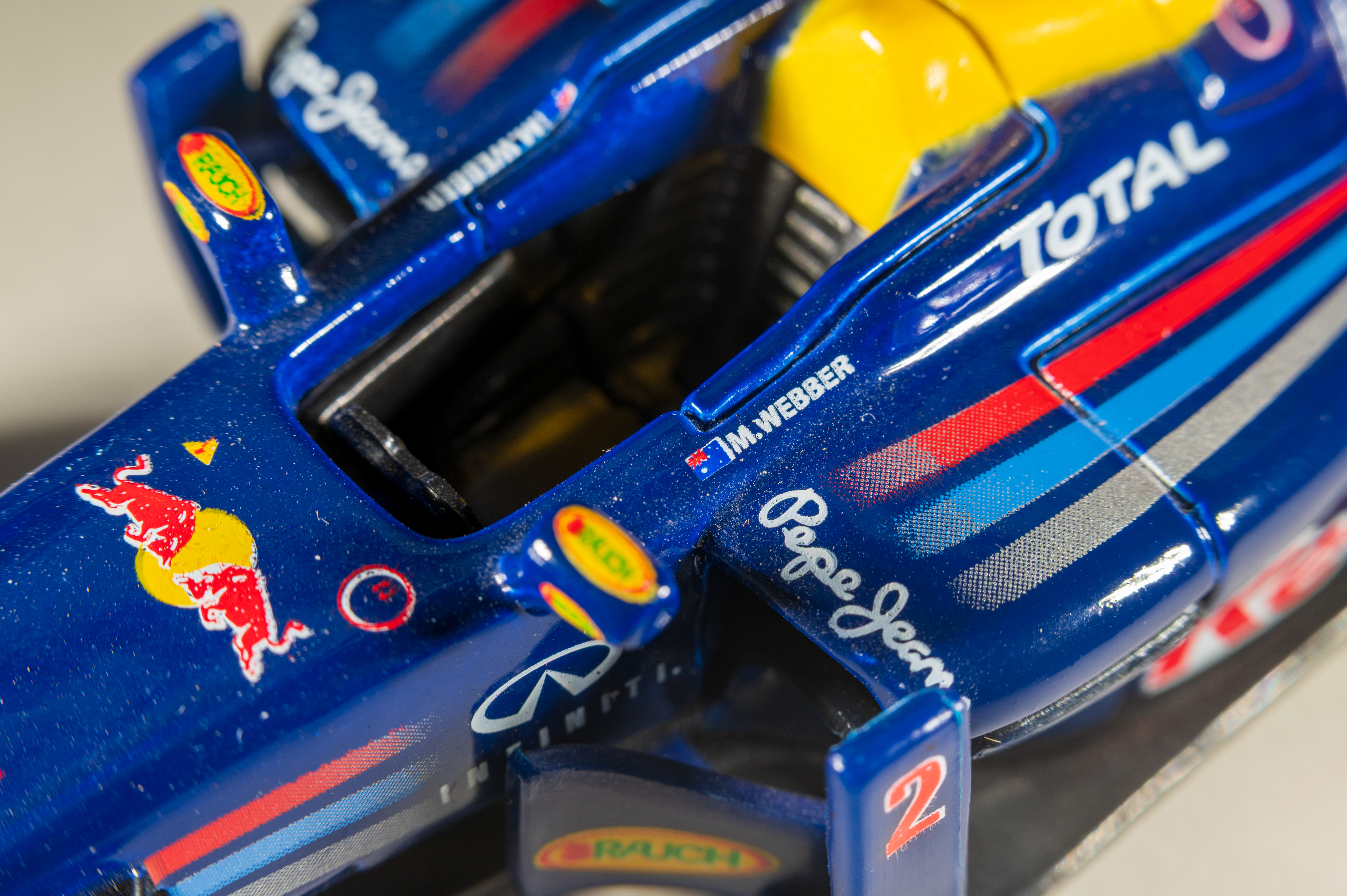
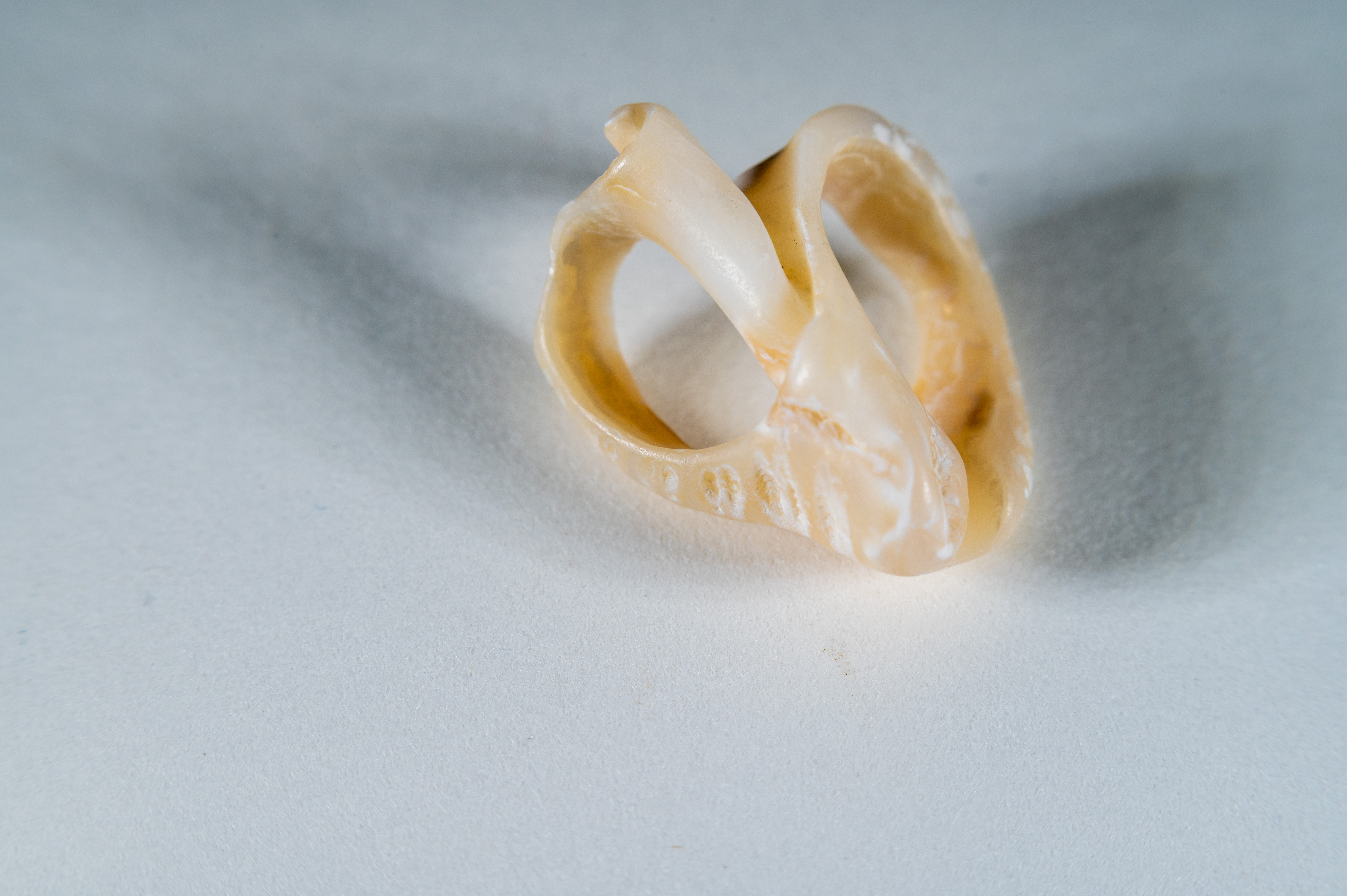
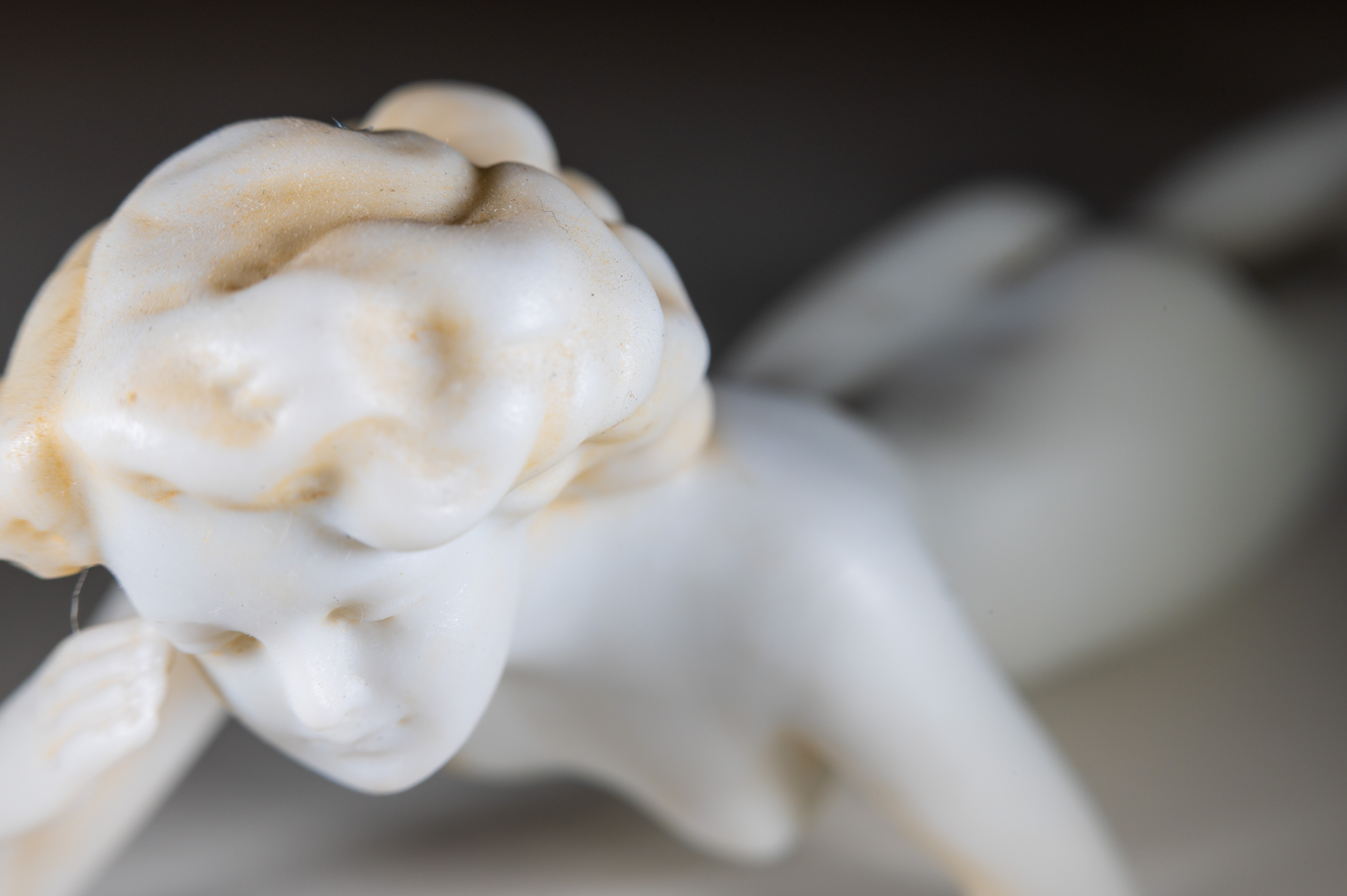


Viltrox DG AF Macro Extension Tube Ring: Verdict
Sometimes I feel like less is more, and this is one of those times. A triple set of extension tubes can be a bit of an overkill, and a bit unwieldy if you join all three tubes together. I really like the combination of these two 12mm and 24mm tubes, which give plenty of magnifying power in their own right and are super-strong when used together in tandem. Sure, focusing can be a bit fiddly but that’s always the case when using extension tubes and it’s less of a problem with mirrorless cameras compared with DSLRs. Either way, the full electronic communication between camera and lens enables consistently accurate light metering and I found that the Viltrox tubes delivered excellent results with the minimum of fuss and bother. They’re also great value at the price, making them a real bargain. I’d expect nothing less from Viltrox.
Features ★★★★☆ | Full electronic communication is literally a power-up for these dual 12mm and 24mm extension tubes. |
Design ★★★★☆ | High-quality plastic bodies with a ridged anti-reflective interior are bookended by metal mounting plates at each end. |
Performance ★★★★☆ | Performance is enhanced by the Viltrox kit being quick, easy and effective to use, enabling a great hit rate. |
Value ★★★★★ | Sure, the kit is based on two extension tubes rather than three, but it’s great value for money at the price. |
Alternatives
The Meike MK Extension Tube Set is another kit that’s designed for mirrorless cameras, but is available in a greater range of Canon RF, Nikon Z, Sony E and L-mount options. Again, this set only comprises two rather than three tubes, and the lengths are different depending on the mount version. Each tube has full electronics connectors and a camera and lens mount at opposite ends.
The Fotodiox Macro Extension Tube Set is available in a wide range of Canon EF, Fujifilm X, MFT, Nikon F, Sony A and Sony E mount options. It has three tubes with lengths of 7mm, 14mm and 28mm but no electronic connections. As such, it can only be used in fully manual mode, with lenses that feature mechanical control rings for aperture and focusing.
Deals
Matthew Richards is a photographer and journalist who has spent years using and reviewing all manner of photo gear. He is Digital Camera World's principal lens reviewer – and has tested more primes and zooms than most people have had hot dinners!
His expertise with equipment doesn’t end there, though. He is also an encyclopedia when it comes to all manner of cameras, camera holsters and bags, flashguns, tripods and heads, printers, papers and inks, and just about anything imaging-related.
In an earlier life he was a broadcast engineer at the BBC, as well as a former editor of PC Guide.
You must confirm your public display name before commenting
Please logout and then login again, you will then be prompted to enter your display name.
